What is IT software?
IT software is a type of platform that makes it easier to secure, manage, or automate business devices and processes. This could include artificial intelligence, application development, backup and recovery, or network monitoring tools, along with many others.
The right software can be one of the most powerful resources IT professionals can use to align their roles with more significant business priorities. This guide will help buyers and procurement teams better understand products, features, and specific use examples to choose the best IT solutions for their needs.
IT is a vast category that includes many types of software. We curated a list based on our expert recommendations that provides you with the most pertinent information on some of the top players in the field.
- IBM Watson: Best Business AI software
- Zendesk: Best IT Help Desk software
- Amtel: Best Mobile Device Management software
- BitDefender Total Security: Best Cybersecurity software
- IDrive: Best cloud storage backup software
- Google Drive: Best file sharing software
- Red Hat Ansible: Best configuration management software
Our picks for the best IT software
IBM Watson: Best Business AI software
Pros
Cons
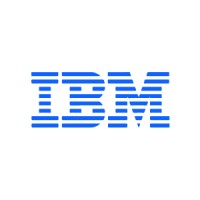
IBM Watson, named after IBM’s founder Thomas J. Watson, started as a groundbreaking AI system developed through IBM’s DeepQA project. Initially, Watson was designed to answer questions on the quiz show Jeopardy! and famously outperformed human champions, winning a $1 million prize in 2011. Unlike traditional search engines that simply return results, Watson was built to understand and respond to complex queries, offering a level of insight far beyond standard search functions.
Today, Watson has evolved significantly. While it initially ran on a cluster of Power 750™ computers, Watson now leverages IBM’s powerful cloud infrastructure to support a broader range of applications. Its capabilities have expanded beyond simple Q&A to include advanced natural language processing, machine learning, and data analytics. Now, Watson doesn’t just “answer”; it can “see,” “hear,” and “recommend” in ways that allow me to apply it across diverse use cases, from customer support and marketing insights to predictive analytics and data-driven decision-making.
Other leading AI software
Zendesk: Best IT help desk software
Pros
Cons

Zendesk, Inc., originally founded in Copenhagen, Denmark, in 2007 by Morten Primdahl, Alexander Aghassipour, and Mikkel Svane, has grown from a small-business support solution into a global leader in customer service software, now headquartered in San Francisco. Known for its robust, user-friendly platform, Zendesk has expanded its reach to serve enterprises of all sizes with various tools that enhance customer experience across multiple channels.
In November 2024, Zendesk introduced updates that further refined its Suite plans. These include enriched AI-powered analytics, advanced agent productivity features like Ticket Triage for streamlined support workflows, and custom fields within messaging apps for more personalized customer interactions. The new dynamic Content Blocks feature also enhances help center customization, allowing for a more seamless brand experience. With its continued innovation and commitment to adaptability, Zendesk is well-positioned to support complex customer service needs in a rapidly changing market.
Other leading Help Desk Solutions
For a more complete list of vendors, check out our Help Desk Software Buyer’s Guide.
Amtel: Best Mobile Device Management software
Pros
Cons

Amtel, Inc. is a telecommunications management company headquartered in Santa Clara, California. Established in 2004, Amtel specializes in providing cloud-based mobile device security and expense management solutions. The company’s primary focus is on integrated enterprise mobility management, telecom expense management (TEM), and secure messaging software as a service for enterprises.
Amtel’s Mobile Device Management (MDM) solution was launched in 2010, combining mobile device security management with mobile apps management on a telecom information management system (TIMS) platform. In 2016, Amtel was acquired by Netplus and later by StoneCalibre.
Other leading Mobile Device Management Solutions
BitDefender Total Security: Best Cybersecurity software
Pros
Cons
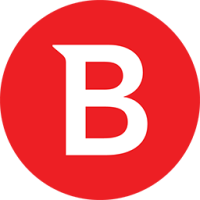
Established as a top-tier offering, Total Security provides extensive protection across various platforms, including Windows, Mac, Android, and iOS. One of its standout features is the support for mobile devices and macOS, supplemented by a OneClick Optimizer for PCs and an anti-theft tool for remote access in case of theft. The software also boasts real-time antivirus protection, web attack prevention, and a VPN for enhanced online privacy. However, the VPN comes with a 200MB daily limit.
Other leading Cybersecurity Software Solutions
Get the Buyer’s Guide to Security Software for a full list.
IDrive: Best cloud storage backup software
Pros
Cons
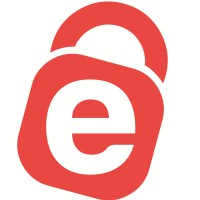
IDrive Inc., headquartered in Calabasas, CA, is a privately-held company that specializes in cloud storage, online backup, and remote access. The company’s core offerings include IDrive, RemotePC, and IBackup, serving over 4 million customers. IDrive stands out by allowing consumers to securely backup multiple computers and mobile devices into one account at the same cost. For businesses, it offers the flexibility to create multiple user accounts and manage the backups of their computers/servers seamlessly.
Other leading cloud backup and storage software
Google Drive: Best file sharing software
Pros
Cons

Google Drive is a file storage and synchronization service developed by Google. Launched on April 24, 2012, it allows users to store files in the cloud, synchronize files across devices, and share files. Google Drive integrates with Google Docs, Google Sheets, and Google Slides, enabling collaborative editing of documents, spreadsheets, presentations, and more. Files created and edited through the Google Docs suite are saved in Google Drive. It offers users 15 GB of free storage, shared with Gmail and Google Photos. Additionally, Google Drive provides advanced search features, allowing users to find files using natural language queries. A significant component of Google Workspace, Google Drive offers enhanced collaboration tools for businesses and organizations.
Other leading file sharing software
Red Hat Ansible: Best configuration management software
Pros
Cons

Red Hat Ansible, launched in 2012, is an open-source automation tool designed for configuration management, application deployment, and task automation. Acquired by Red Hat in 2015, it has since become an integral part of many IT infrastructures. Ansible operates in an agentless manner, ensuring ease of integration. Its human-readable YAML scripts foster collaboration and simplify complex tasks. Recent enhancements include Ansible Content Collections for faster automation and Ansible Content Tools for consistent code creation.
Other leading Configuration Management Solutions
Find your new IT software
Types of IT software
While most software could be considered “IT software,” including project management software, accounting software, and CRM software, we provided vendor information on enterprise software for device and cloud management in this article. For example, remote monitoring and management (RMM) software allows IT professionals to access, update, and analyze organizational devices. On the other hand, task management software, while technically something that could fall into the purview of IT software solution, does not deal directly with devices or cloud environments.
Enterprises and small businesses looking to improve their technology processes should consider the following types of IT software:
Configuration Management Software
Configuration management (CM) software — often referred to as a configuration management system (CMS) — helps IT professionals manage the physical and virtual IT environment by monitoring changes made during software development, implementation, and updates.
The end goal of a CMS is to maximize system performance and serviceability by reducing mistakes and inconsistencies. This is typically accomplished by mapping an IT environment (an ongoing process), keeping accurate documentation (for updates, releases, asset inventories, structural modifications) and storing the subsequent data in a configuration management database (CMDB). CM software also uses internal verification and audit tools to determine compliance with predetermined baselines and regulatory standards.
Most CM tools incorporate some or all of the following common features:
- Configuration management database
- Discovery automation
- Dependency mapping
- Change management
- Impact analysis
- Asset inventory management
- Baseline management
- Incident/Fault Reporting
IT Help Desk Software
Help desk software allows IT departments to automate customer service management. It serves as a platform where staff and network users can report issues and IT administrators can systematically address them. Most products use a ticketing system to log requests, prioritize, and queue them for completion, which saves administrators the time and effort associated with manual troubleshooting (e.g. phone calls, emails, repetitive office visits). Help desk software also increases employee productivity by allowing users to submit help tickets through an online portal, rather than leaving their work-in-progress to visit an IT manager.
Beyond one-off troubleshooting, help desk solutions offer smart tools for automating the resolution process, such as auto-assign features (allocate tickets to specific technicians based on skills required or issue type), shared macros (predetermined fix actions auto-prescribed for a simple or recurring issue), and self-help resources for your staff. Finally, reporting and analytics tools can offer valuable insight about your help center operations, such as average resolution times, trends in past tickets, and user sentiment.
Here are some common features found in IT help desk software:
- Ticketing/Issue management
- Custom SLAs (service level agreements)
- User/customer portal
- Self-help database
- IT purchase requests
- Asset scanning
- Reporting/analytics
- Integration with other IT tools (CMDBs, asset and systems management, etc.)
Mobile Device Management Software
As an increasingly tech-savvy, mobile population enters the workforce, IT managers are seeing a growing presence of personal devices in the workplace. Since personal mobile devices aren’t governed by the IT department, they present additional security and privacy concerns. Even so, approximately 87% of organizations need their employees to be able to access enterprise applications from their mobile devices.
At a minimum, IT leaders should institute a clear bring-your-own-device (BYOD) policy that addresses password protection, encryption, and best practices for mobile access of company data. But many companies are going the extra mile by implementing mobile device management (MDM) software — which gives IT administrators the power to monitor and control application access and configuration settings for smartphones, tablets, and other devices used by employees, whether personal or company-owned. Many solutions also have the power to remotely lock or erase device data in the event of loss, theft, or hostile termination.
Some MDM products are available as standalone, “best-of-breed” solutions, while others are part of a larger IT management suite. Compatibility with mobile OS (Android, iOS, Windows) varies by vendor.
Common features of MDM software include:
- Passcode and encryption enforcement
- Loss/theft protection
- Mobile application management
- Enterprise or group-specific apps
- App blocklisting
- Enterprise purchasing
- Secure distribution
- Mobile content management
- Email management
- Device security (malware protection, web filtering)
- Network access control (WiFi, VPN)
- Geolocation triggers (lock devices outside of specific locations)
Cybersecurity software
Cybersecurity software keeps malware and attackers out of an organization’s network. These tools may use signature matching, artificial intelligence and machine learning, or other methods to identify and contain attacks on the system. Security software ranges from basic antivirus solutions all the way to full endpoint protection platforms. There are cybersecurity tools built specifically for networks, endpoints, and even cloud environments.
Small businesses should consider software companies that offer managed cybersecurity solution software because they likely don’t have a large in-house IT team. This allows them to keep their data safe while leaving their internal IT staff free for digital transformation projects and help desk support. Enterprises, on the other hand, may prefer best-of-breed tools that integrate easily with each other. Easy integration allows these large businesses to monitor every aspect of their network environment from a single console, making it easier to spot and remediate breaches quickly.
Some common features include:
- Behavioral analysis
- Artificial intelligence and machine learning
- Malware & ransomware protection
- Data backup and recovery
- Role-based access control
Cloud backup and storage software
Cloud backup and storage software has become a critical IT software category for businesses of all sizes. With the rise of data-driven decision-making, the ability to store and retrieve vast amounts of data has become essential. Cloud backup and storage software provides businesses with a reliable and secure way to store their critical data, without the need for physical storage devices.
One of the major benefits of cloud backup and storage software is its scalability. As businesses grow, their data storage needs grow as well. Cloud backup and storage software allows businesses to easily expand their storage capacity without the need for costly hardware upgrades. Additionally, cloud backup and storage software provides businesses with a high level of data security. With data breaches becoming increasingly common, businesses need to ensure their data is protected. Cloud backup and storage software providers offer a range of security features, including encryption and access controls, to keep data safe.
Common features include:
- Automatic backups
- Scalability
- Security
- Remote access
- Version control
- Disaster recovery
- Compliance
File sharing software
With remote work becoming increasingly common, the ability to share files securely and efficiently has become critical for collaboration and productivity. File sharing software provides businesses with a centralized platform for sharing and collaborating on files, regardless of location or device.
One of the major benefits of file sharing software is its ease of use. With file sharing software, businesses can easily share files with team members, clients, and partners, without the need for complicated file transfer protocols or email attachments. Additionally, file sharing software provides businesses with enhanced security and control over their data. With data breaches becoming increasingly common, businesses need to ensure that their data is protected. File sharing software providers offer a range of security features, such as encryption, access controls, and audit trails, to keep data safe and ensure compliance with relevant regulations.
Common features of file sharing include:
- Granular permission sharing
- Large file support
- Custom branding, colors, and themes
- Activity tracking
- File storage
AI software
One of the major benefits of AI software is its ability to automate tasks that would otherwise require significant time and resources. For example, AI-powered chatbots can handle customer inquiries and support requests, freeing up human customer service representatives to focus on more complex issues. Additionally, AI software can analyze large amounts of data and identify patterns or trends that may not be immediately apparent to humans. This can be particularly useful in IT, where AI software can be used to monitor network traffic, detect anomalies or security threats, and optimize system performance.
In the IT industry, AI software has a wide range of applications, including network optimization, cybersecurity, and data analysis. For example, AI-powered network monitoring software can identify network congestion or bottlenecks and automatically adjust network settings to optimize performance. AI-powered cybersecurity software can detect and prevent security threats in real-time, protecting businesses from cyber attacks. Finally, AI-powered data analysis software can help businesses analyze large amounts of data and identify patterns or trends that may not be immediately apparent to humans.
Common AI features for IT include:
- Automation
- Predictive analytics
- Natural language processing
- Machine learning
- Data visualization
- Integration with other tools
- Cloud-based deployment
Also read: Top IT Service Management (ITSM) Software
What are the key features of IT software?
While there are many variations of IT software, they should at least have a few things in common.
Deployment options
The best IT software will allow organizations to choose whether they deploy it on-premises or via the cloud. Cloud-based software makes businesses more agile and better enables remote work because employees can access the information from anywhere, but some companies may have regulatory requirements that would force them to deploy software on-premises.
Automated backups & version control
Data backups are crucial for organizations to avoid the loss of valuable data during a natural disaster or cyber attack. IT software should include regular, automated backups, so companies don’t have to remember to backup their data. Additionally, version control allows users to revert to an earlier version of a file in the event that it gets changed accidentally.
Customization
Not all companies will have the same requirements for their IT software solution, so there should be customization options available. Whether that’s the types of features included, the number of licenses, or the way the dashboard looks, customization makes it easier for organizations to get what they need from the software.
Integrations
IT software should integrate with many other tools in an organization’s ecosystem in order to pull necessary data and be able to automate processes. Native integrations are the best option, but API connections will work as well as long as the business has someone to set them up correctly.
Trends affecting the IT software market
Modern IT departments face a maelstrom of new, unpredictable variables, with essentially two options: adapt or remain in the dark. The COVID-19 pandemic accelerated many digital transformation projects and introduced new challenges in the rush to enable remote work.
Shadow IT
On average, companies have three times more applications running on their networks than their IT department is aware of. Examples might include a file storage site, a homemade spreadsheet for company data, or an email service. Shadow IT poses a threat, since it isn’t ruled by the same security measures as approved solutions, but it also represents a failure of the established IT environment to meet end-to-end needs.
Cloud infrastructure
Instead of building on their own in-house servers, many businesses now host their IT environment through an IaaS (Infrastructure-as-a-Service) provider such as Amazon Web Services, Microsoft Azure, or Rackspace. This helps reduce overhead costs and maintenance, but a multi-tenant environment brings added complexity, multiple virtual machine (VM) layers, and a higher demand for security and access control.
Many organizations also rushed their cloud migrations in an attempt to allow remote work sooner than they intended. This means their connections may not be as secure as they should be, and they could likely optimize their setup for better results.
Democratization of technology
As employees and lines of business (LOBs) increasingly scout out their own solutions on an as-needed basis, many IT managers have decided — instead of cracking down — to take on a new role as a technology broker, which some have referred to as “IT-as-a-Service” or ITaaS. In this approach, IT is responsible for supplying the technology needs for LOBs by vetting and aggregating third-party providers, often at the request of employees themselves. This stands in stark relief to the traditional framework, where CIOs impose solutions from the top-down.
Big data
Approximately 43% of IT decision-makers worry that their current IT infrastructure won’t be able to handle their future data needs. How much more so for middle-market companies and small businesses? Data analytics software can be highly complex, requiring knowledge of mining and governance techniques, as well as the capability to integrate third-party platforms with multiple data sources. Many companies are relegating their big data responsibilities to the IT department, which means IT professionals need to understand how the moving parts of their infrastructure work together in order to derive useful business intelligence.
Choosing the best IT software for your business
The right IT software better positions CIOs, CTOs, system administrators, etc. to confront their challenges by simplifying infrastructure and enhancing visibility, integration, and security without slowing the pace of innovation.
Businesses should consider their current IT resources and choose software that fills any gaps. For example, small businesses may look for managed software solutions, while enterprises may need better visibility into their network environment.
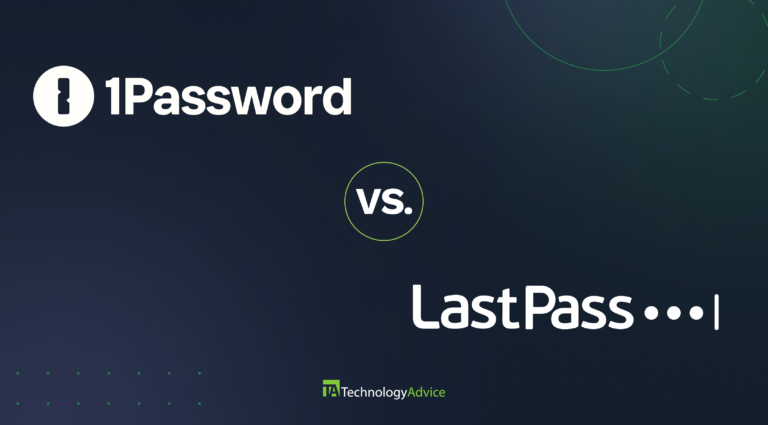
1Password vs LastPass: Password Management Review
Both 1Password and LastPass are incredibly powerful password managers that can transform your business. Read our complete guide on 1Password vs LastPass now to discover the pros and cons of each.
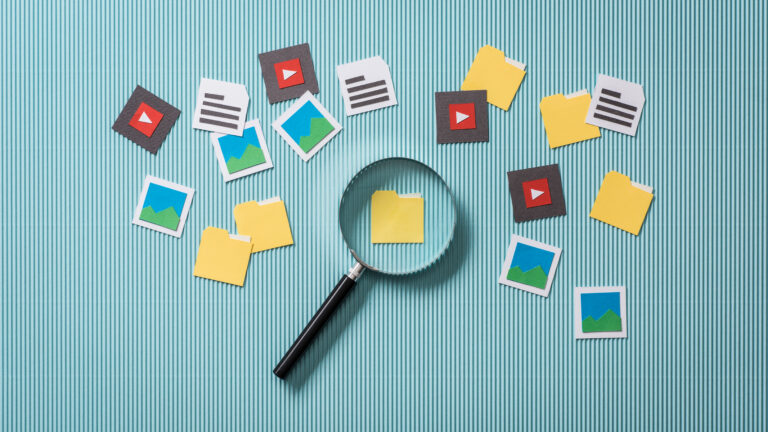
What is Metadata? Overview, Benefits & Use Cases
What is metadata and why does it matter? Learn about its various types, applications, and how it enhances data organization and retrieval.

What is an AI Call Center? A Complete Guide in 2024
Key takeaways Artificial intelligence can optimize and improve customer-facing systems or processes for businesses that […]

What is a Hosted Call Center? Benefits & Applications
Hosted call center solutions offer cloud-based management for businesses, improving customer support and reducing costs. See how they can streamline your operations.
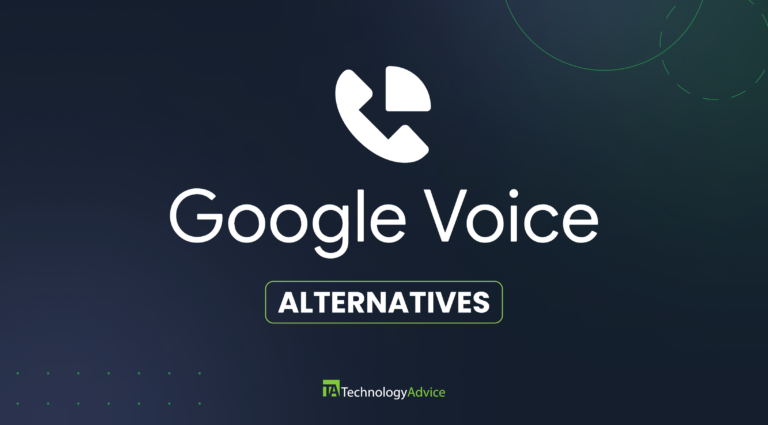
Top 6 Google Voice Alternatives for 2024
Discover the best Google Voice alternative for seamless communication. Explore affordable VoIP services, features, and find a solution for you.
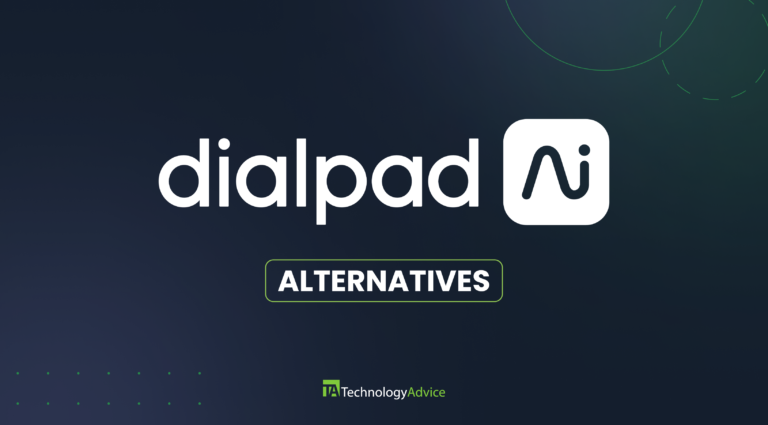
11 Best Dialpad Alternatives and Competitors
Can’t decide if Dialpad is the right VoIP solution for your business? Here’s a list of alternatives to help you make the right decision.


